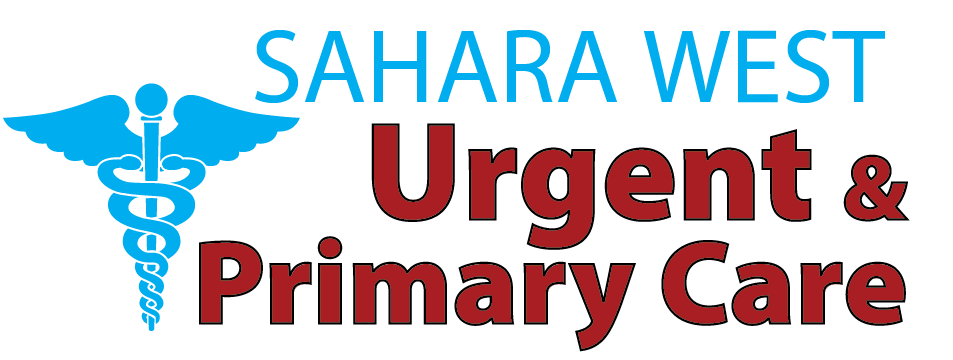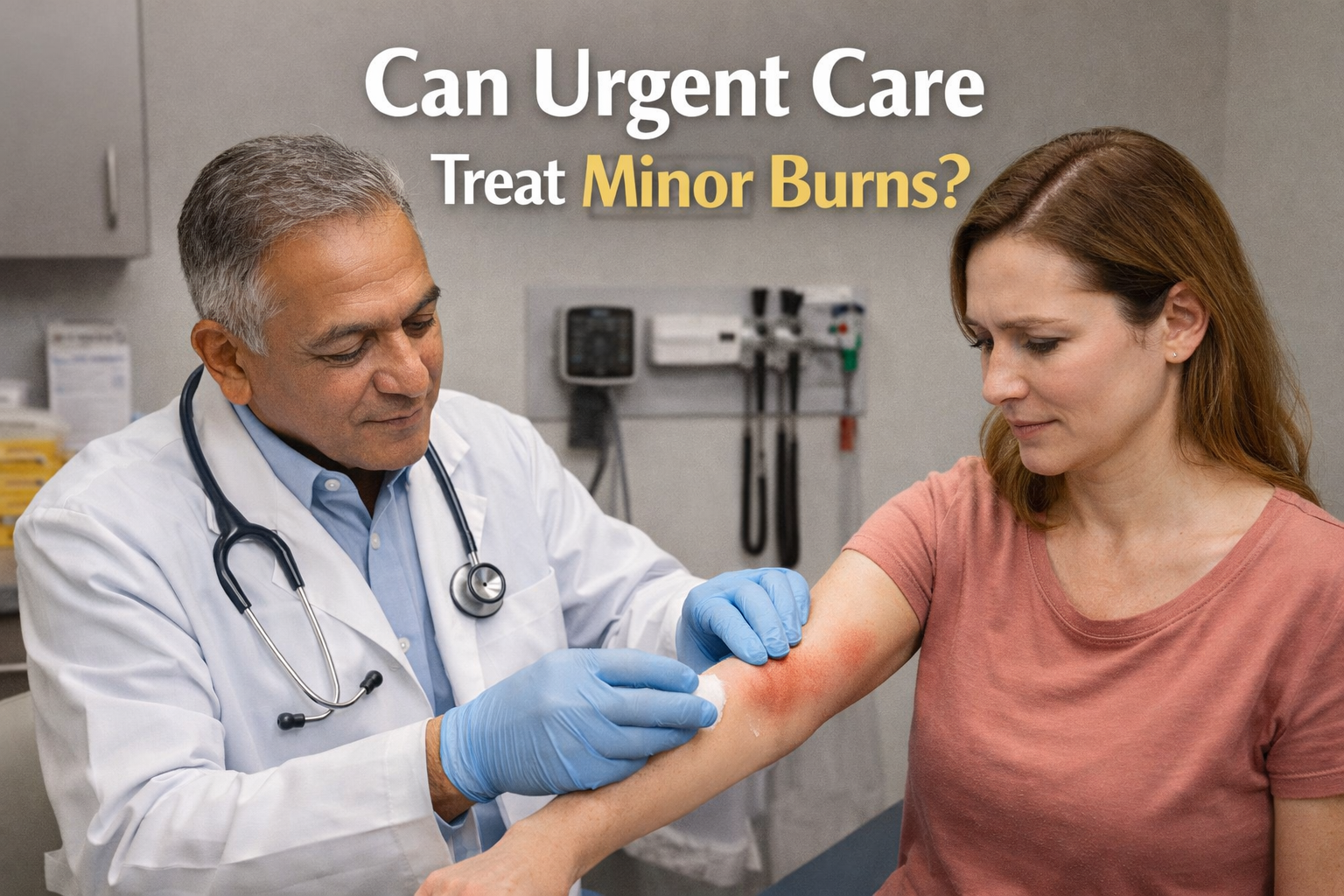Urgent care centers have become vital medical facilities where patients can obtain necessary medical care within a short span of time compared to emergency rooms, which are expensive and characterized by long queues. Rapid testing is one of the greatest benefits of this literature, as it enables the swift diagnosis of a diverse array of health issues.
Urgent care rapid tests give the answers in a few minutes, whether you show flu-like symptoms, you suspect strep throat, or want a pregnancy confirmation. This accelerates both the treatment decisions and contributes to the reduction of spreading of contagious conditions.
Here, you can get the full, detailed overview of the rapid tests offered at the urgent care and how they are used, their advantages, accuracy, and all you are likely to experience when you visit urgent care.
Understanding What Rapid Testing Means in Healthcare
Rapid testing denotes a group of diagnostic activities that deliver the results in a short time, generally in the time of 5 to 30 minutes. The tests are intended to locate infections, diseases, or biological markers with as little time delay as possible so that immediate clinical decisions can be made.
Rapid tests are done in-house as opposed to traditional lab tests that may last hours or even days at a time. That is why they are ideal to use in the urgent care environments because they require speed, convenience, and ease of access.
The latter includes swabs, urine, finger sticks, or a minor prick of blood. The process takes a short time, and the results are made available within the same visit, usually without you first leaving the clinic.
Why Urgent Care Clinics Use Rapid Tests
Urgent care facilities are built to deliver fast and efficient medical services, especially for non-life-threatening issues. Rapid tests fit perfectly into this model for several reasons:
- They help detect infections early, before symptoms worsen
- Immediate diagnosis leads to quicker treatment
- They reduce unnecessary prescriptions by confirming the exact illness
- Patients avoid long waits typical of hospital labs
- They help prevent the spread of contagious diseases by identifying them early
Whether you’re dealing with seasonal illness or an unexpected health concern, rapid tests support better care decisions in real-time.
Most Common Rapid Tests Available at Urgent Care
Urgent care clinics are now offering an extensive variety of FDA-approved tests that deliver roomy and accurate diagnoses that may include viral infection, pregnancy identification, to mention a. The most prevalent of them are examined as follows:
COVID-19 Rapid Testing
Rapid tests against COVID-19 have become one of the most common diagnostic tools in urgent care. These tests are quite fast and hence important during an outbreak or following exposure.
There are two main types:
Antigen Test
It is an evaluation that identifies certain virus proteins. It is insensitive compared to the PCR, but gives results within 15 minutes. It is most effective when employed early in the time of developing symptoms.
Rapid Molecular Test (NAAT)
This is a better alternative because the test identifies the genetic material of the virus. It normally takes 30-60 minutes, although it may still be fast. It would be appropriate to verify the findings of an antigen test or to detect the early infection.
The tests will aid in deciding whether to remain in isolation or get treatment without spending days in the lab.
Influenza A and B (Flu) Rapid Test
Symptoms of flu are likely to resemble symptoms of other respiratory diseases. It is easier to differentiate it from other viruses, such as COVID-19 or RSV, with the help of the flu rapid test Las Vegas. It is conducted through the nose or throat swab.
The results are ready after approximately 10 to 15 minutes. In case they are positive, antiviral drugs may be administered to them instantly to decrease the intensity and the time of treatment. The testing is of the most help at the time of a flu epidemic, or in school and work communities.
Rapid Strep Throat Test
Strep is not always associated with a sore throat. The test detects the presence of Group A Streptococcus bacteria that cause strep throat. It is fast and painless, and a throat swab is all that is needed.
It takes 5 to 10 minutes to get results. With a positive outcome, it will be possible to immediately treat the person with antibiotics, which can eliminate possible complications such as tonsillitis or rheumatic fever. In case the outcome is a negative test and the presentation is indicative of strep, the throat culture could be repeated or may be performed.
Rapid RSV Testing
Respiratory syncytial virus, known as RSV, is a common type of virus that targets the respiratory system and more especially in infants and young children. It causes bronchiolitis and pneumonia, especially in young children aged below 2.
Rapid test for RSV aids is related to the type of RSV test, and it takes fewer than 20 minutes to obtain the result through a nasal swab. The early identification of the disorder aids the caregivers and the medical personnel to concur with the symptoms before the occurrence of the complications.
Mononucleosis (Mono) Rapid Test
The Epstein-Barr virus may cause Mono, with symptoms such as sore throat, fatigue, and the presence of swollen lymph nodes-similar to flu or strep. A mono rapid test examines blood (usually through a pricked finger) against in particular antibodies.
It takes less than 10 minutes to present results. In case it is positive and should be supportive, i.e., rest, hydration, anti-inflammatory medications can be recommended.
Rapid Urinalysis
Urinary ways can detect several diseases such as urinary tract infections (UTIs), kidney issues, and diabetes. In the scene of urinary tract infection, evaluation by dipstick urinalysis offers a quick answer about the presence of bacteria, white blood cells, proteins, and glucose at immediate care.
It barely requires several minutes, and in case of the detection of a UTI, then antibiotics can be prescribed immediately. It could be required that, in certain situations that lab tests are followed up with further testing.
Pregnancy Testing
Urgent care clinics also provide pregnancy tests using urine within a short time in case a woman suspects a pregnancy because of a missed period or feeling nauseated, or feeling tired.
Pregnancy Test: It determines whether a pregnant woman is carrying a hormone in her urine. In 2-5 min. The results become available. Sometimes a blood test is also carried out to confirm or determine the educational age.
Blood Glucose Testing
A blood glucose test can help with the diagnosis or management of diabetes as well as monitoring blood sugar during symptoms such as dizziness, confusion, or blacking out.
A finger-prick test gives results within 5 minutes. After the test, the important thing is that the urgent care provider can treat low or high blood sugar right away.
Rapid Drug Screening
Drug tests are frequently required during employment, legal or cases where there is suspected drug misuse. Quick screening of the drugs is available in emergency departments through urine or saliva.
These are tests that are used to screen various drugs like THC, cocaine, opioids, among others. It normally provides results within minutes, and it can confirm the results at the laboratory.
HIV Rapid Test
It is important to detect HIV at an early stage. Rapid HIV testing, which is carried out with a prick of the finger or an oral swab, is usually confidential and can now be provided by many urgent care plans.
The results can be obtained in 20 minutes. In case of positivity, the provider will prescribe retesting and refer the patient to treatment facilities.
Accuracy and Reliability of Rapid Tests
While rapid tests are highly convenient, their accuracy can vary based on the test type, sample quality, and timing.
- Antigen tests may occasionally yield false negatives, especially early in an illness
- Molecular tests are more accurate but may take slightly longer
- Urinalysis and pregnancy tests are typically very reliable
To increase accuracy, providers may repeat tests or use confirmatory lab methods if needed. Clinical judgment plays a key role in interpreting rapid test results.
Advantages of Rapid Testing at Urgent Care
Urgent care rapid tests offer a wide range of benefits:
- Speed: Get results before you leave
- Convenience: No need for lab appointments or referrals
- Cost-effective: Less expensive than emergency room visits
- Comprehensive care: Diagnosis and treatment under one roof
- Peace of mind: Quick answers reduce anxiety about symptoms
These tests make urgent care clinics a one-stop solution for diagnosing common illnesses quickly and accurately.
What to Expect During Your Visit
When you walk into an urgent care center for rapid testing, here’s what typically happens:
- You’ll be checked in—no appointment is usually required
- A healthcare provider will review your symptoms and determine which test is appropriate
- The test (swab, urine, or blood) will be conducted
- Results will be shared within 5–30 minutes
- If necessary, a treatment plan will be created on the spot
The process is quick, private, and patient-friendly.
Pediatric Rapid Testing at Urgent Care
It is important to detect HIV at an early stage. Rapid HIV testing, which is carried out with a prick of the finger or an oral swab, is usually confidential and can now be provided by many urgent care plans.
The results can be obtained in 20 minutes. In case of positivity, the provider will prescribe retesting and refer the patient to treatment facilities.
Are Rapid Tests Covered by Insurance?
Insurance generally covers rapid testing at urgent care in most instances, particularly when the testing is medically necessary. The level of coverage can vary depending on an insurance provider and the type of tests.
Self-pay patients may pay as low as 20 dollars and up to 100dollars, depending on the test. Most of the clinics have cash deals. A head call is most convenient, and one should make a prior call to verify prices and coverage.
When Should You Get a Rapid Test?
Consider getting a rapid test at urgent care if you experience:
- Sudden or unexplained symptoms
- Exposure to contagious illness
- Missed period or pregnancy concerns
- Signs of a UTI or bladder infection
- Difficulty breathing, sore throat, or fever
- Drug testing needs for work or legal purposes
Early testing leads to faster care, quicker recovery, and reduced risk of complications.
Limitations of Rapid Testing
While useful, rapid tests do have limitations:
- Some tests may produce false negatives
- Not all conditions have a rapid test available
- Follow-up lab work may still be needed
Still, they offer a critical first step toward accurate, timely care.
Final Thoughts
Rapid testing has revolutionised the provision of medical services in urgent care clinics. There will be quick results, adequate readings, and treatment or cure alternatives may be availed on the same day with these tests, so that patients receive what is necessary within the required time.
Whether you need a rapid test to get rid of flu symptoms, to protect ongoing chronic conditions, or to feel just a little bit better, your local urgent care clinic probably has the test you are looking for. To schedule your appointment with the highest standard of care, visit Sahara West Urgent Care on our website, where you can also explore more informative blogs.
FAQs
Is an appointment required for rapid testing?
No, most urgent care centers accept walk-ins for rapid testing.
Are rapid tests accurate?
They are generally reliable, especially when performed by trained staff. However, some may need confirmation.
Do urgent care centers test children?
Yes, most urgent care clinics provide pediatric rapid testing services.
Can I get a COVID and flu test at the same time?
Yes, many clinics offer combination testing for respiratory viruses.
How long do test results take?
Most results are available within 5 to 30 minutes, depending on the test.





